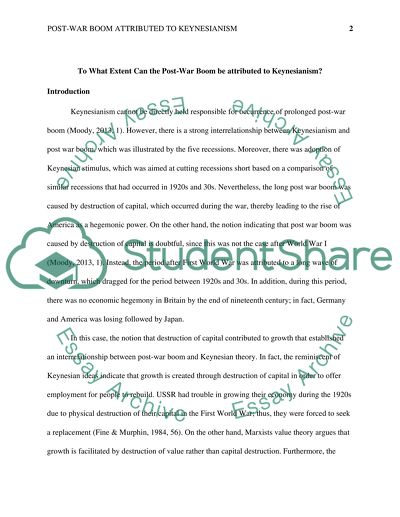Cite this document
(“To what extent can the post-war boom be attributed to Keynesianism Essay”, n.d.)
To what extent can the post-war boom be attributed to Keynesianism Essay. Retrieved from https://studentshare.org/macro-microeconomics/1468041-to-what-extent-can-the-post-war-boom-be-attributed
To what extent can the post-war boom be attributed to Keynesianism Essay. Retrieved from https://studentshare.org/macro-microeconomics/1468041-to-what-extent-can-the-post-war-boom-be-attributed
(To What Extent Can the Post-War Boom Be Attributed to Keynesianism Essay)
To What Extent Can the Post-War Boom Be Attributed to Keynesianism Essay. https://studentshare.org/macro-microeconomics/1468041-to-what-extent-can-the-post-war-boom-be-attributed.
To What Extent Can the Post-War Boom Be Attributed to Keynesianism Essay. https://studentshare.org/macro-microeconomics/1468041-to-what-extent-can-the-post-war-boom-be-attributed.
“To What Extent Can the Post-War Boom Be Attributed to Keynesianism Essay”, n.d. https://studentshare.org/macro-microeconomics/1468041-to-what-extent-can-the-post-war-boom-be-attributed.


